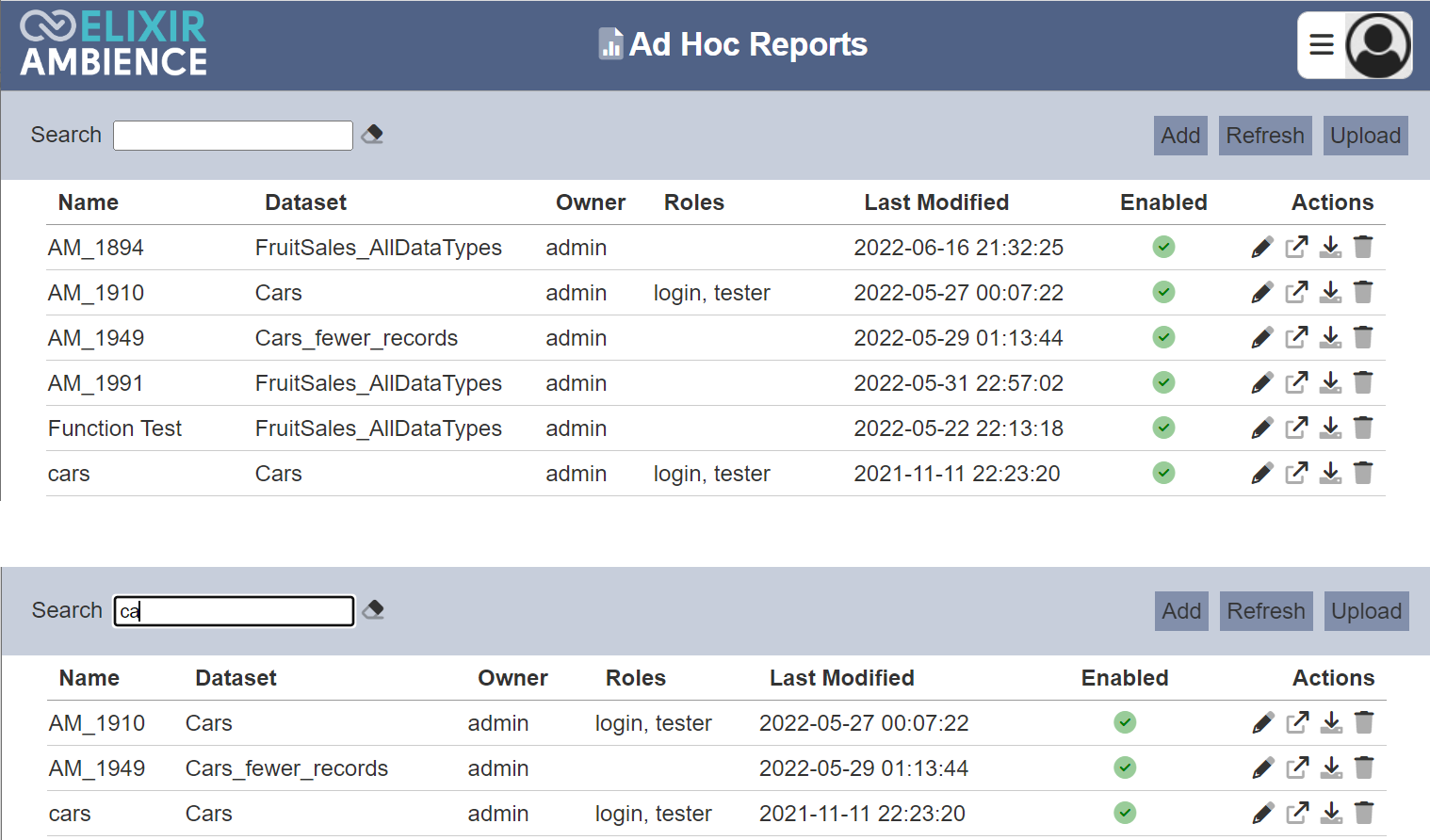Ad Hoc Reports
Description
Ad Hoc Report module allows you to create reports in some pre-defined layout using records from datasets. It provides a simple interface to create, edit and change the layout of the reports.
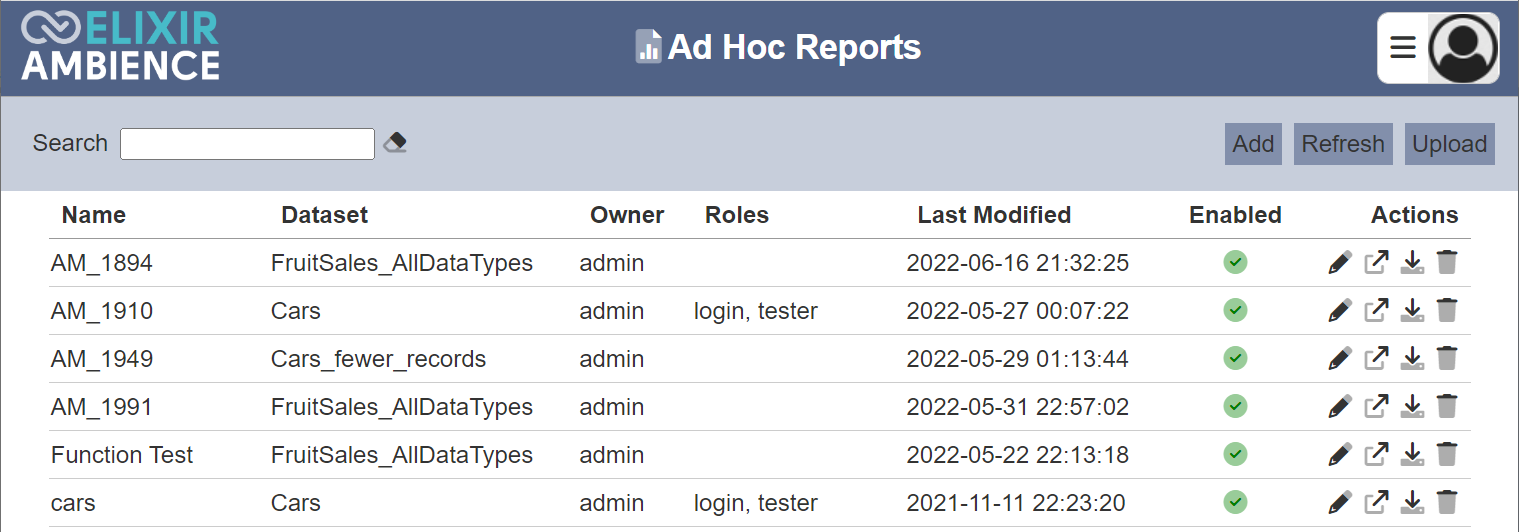
Module Interfaces
| Interface | Description | Required Privilege |
|---|---|---|
| Ad Hoc Report Designer | Allows access to ad hoc reports. | mod-adhoc-report |
| Ad Hoc Report Designer | Allow to edit ad hoc reports. | mod-adhoc-report-edit |
| Ad Hoc Report Management | Allows Ad Hoc Report management page. | mod-adhoc-reports |
| Ad Hoc Report Management | Allow to edit Ad Hoc Report metadata (e.g., role access). | mod-adhoc-reports-edit |
Add Ad Hoc Report
To add a report, click on the “Add” button at the upper right corner of the page.

The “New Ad Hoc Report” dialog box will appear.
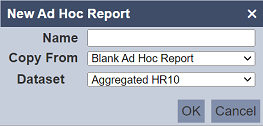
In the “Name” field, key in an unique name for the new report. You can either copy from an existing report from the drop-down list or create a blank report by selecting “Blank Ad Hoc Report” in the “Copy From” field. Select a dataset from the drop-down list in the “DataSet” field. Click on the “OK” button to create the new report or click on the “Cancel” button to abort the action.
Upon successful creation, the “Edit” panel will appear.
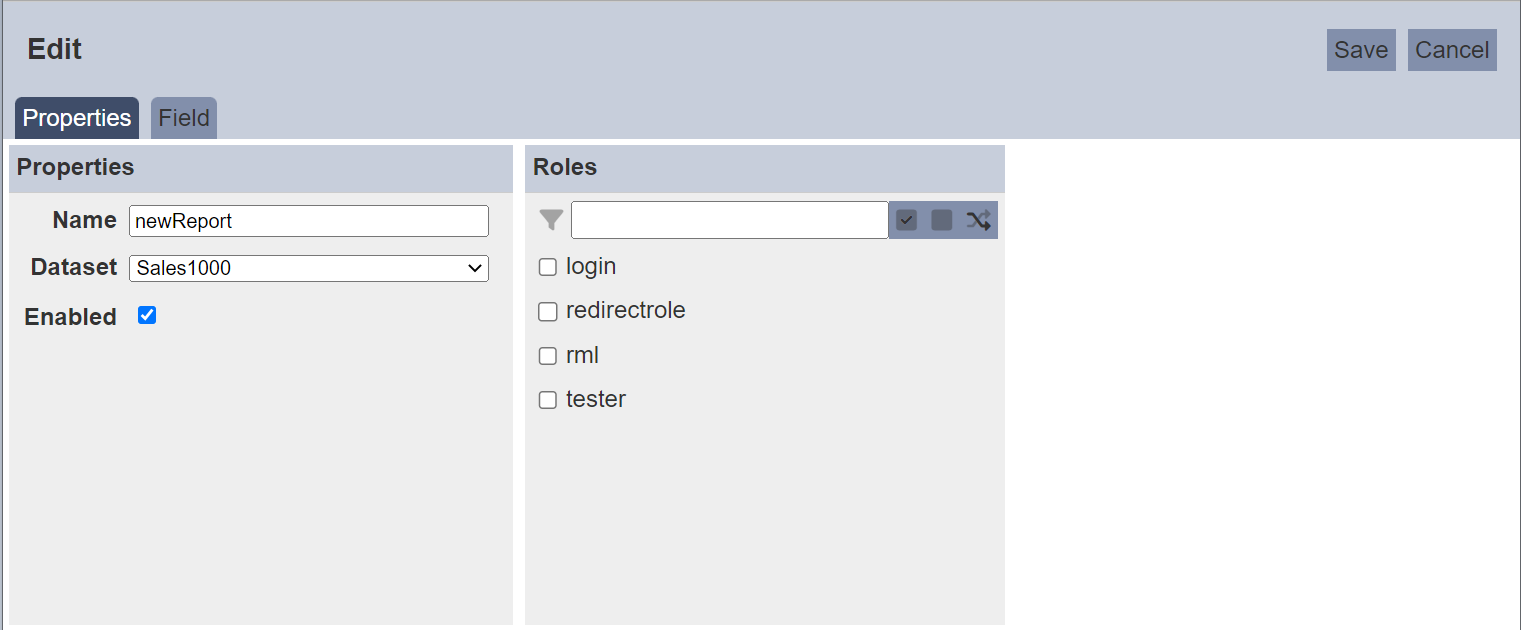
See Edit Ad Hoc Report for more details.
Edit Ad Hoc Report
This feature allows you edit the properties of the visualisation, as well as the roles who can access the visualisation. To edit the visualisation, click on the ![]() “Edit” icon under the “Actions” column corresponding to the desired visualisation. The “Edit” panel will appear. There are two tabs in the panel, the “Properties” and “Field” tabs.
“Edit” icon under the “Actions” column corresponding to the desired visualisation. The “Edit” panel will appear. There are two tabs in the panel, the “Properties” and “Field” tabs.
Properties Tab
The “Properties” panel allows you to edit the name and dataset of the report, as well as enable or disable the report.

Do note that the name need to be unique.
In the “Roles” panel, you can select the Roles that can have access to the report. Alternatively, you can search for the desired role by keying in the keyword in the search function at the top of the panel. You can also choose to select all, select none or invert selection by clicking on their respective icons on the right of the search function.
Field Tab
The “Field” tab allows user to edit the fields in the dataset selected.
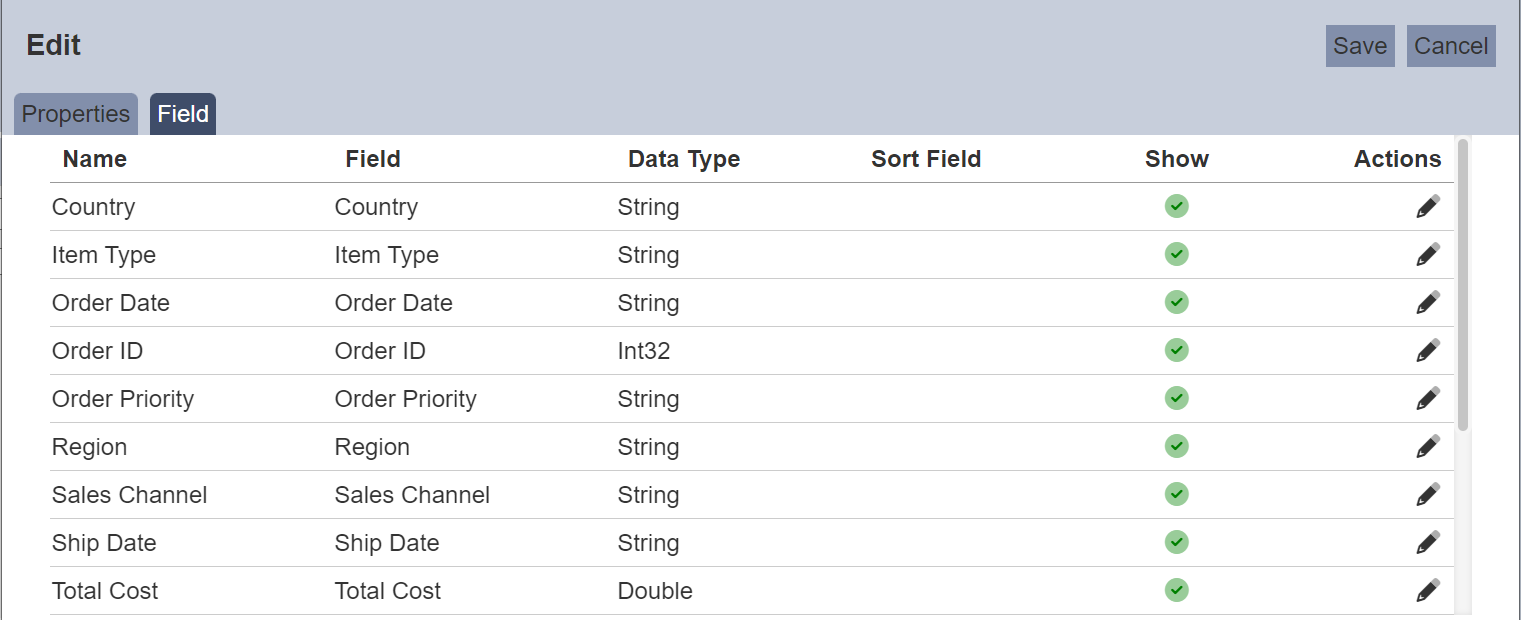
To edit a field, click on the ![]() “Edit” icon under the “Actions” corresponding the desired field. The “Edit Field” dialog box will appear.
“Edit” icon under the “Actions” corresponding the desired field. The “Edit Field” dialog box will appear.
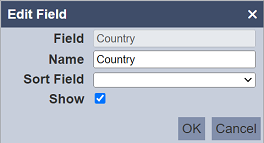
| Field | Description | Input Type | Default Value |
|---|---|---|---|
| Field | Original name of field as in dataset. It is not editable. |
Text field | Name of field as in dataset |
| Name | Name to be used in report. | Text field | Value of “Field” |
| Sort Field | Selects the field in the dataset to sort this field. | Drop-down list | Not selected |
| Show | If selected, shows the field in the Report Designer. If un-selected, the field will available in the Report Designer. |
Checkbox | Selected |
Select and edit the desired fields and click on the “Save” button to save the changes. Clicking on the “Cancel” button aborts the action.
Open Ad Hoc Report
To open a report allows you to edit the setup of the report. You need to have the mod-adhoc-report-edit privilege to do so.
Click on the ![]() “Edit” icon under the “Actions” column corresponding to the desired report.
“Edit” icon under the “Actions” column corresponding to the desired report.
![]()
The Report Designer page will appear.

Refer to Report Designer for more information.
Download Ad Hoc Report
To download a report, click on the ![]() “Download” icon under the “Actions” column corresponding to the desired report.
“Download” icon under the “Actions” column corresponding to the desired report.
![]()
The downloaded report has a filename format of <filename>.adhocreport.json.
Upload Ad Hoc Report
To upload a report, start by clicking on the “Upload” button on the upper right corner of the page.

The “Upload” dialog box will appear.
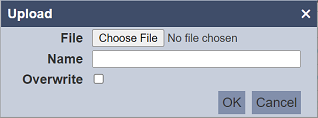
Browse to the location of the report JSON (.json) file to be uploaded and key in an unique name in the “Name” field. If the name already exist, an error message will appear.

If the report to be uploaded is to replace an existing report, select the “Overwrite” field. Click on the “OK” button to upload the report. Click on the “Cancel” button to aborts the action.
Upon successful uploading, a message will appear.

Delete Ad Hoc Report
To delete a report, click on the  “Delete” icon under the “Actions” column corresponding the desired report.
“Delete” icon under the “Actions” column corresponding the desired report.
![]()
There is an option to undo the deletion. A notification with an “Undo” button appears right after clicking on the “Delete” icon.

Upon clicking on the “Undo” button, the deleted report is restored and is added back to the list of reports.
Refresh
After performing actions on the browser/tab, the list is reloaded to display the list of reports. The manual “Refresh” button is available and is particularly useful if you have opened multiple pages and are making changes in these pages.
The “Refresh” button is found on the upper right corner of the page. Clicking on it reloads the list of reports.

Search
There is a cross-field search function for the list of ad hoc reports. It is located at the upper left corner of the page.

This provides an easy way to search through the ad hoc report list. It is case-insensitive and display ad hoc reports that have the entered search value in any of the values of the fields below:
- Name
- Dataset
- Owner
- Roles
- Last Modified
